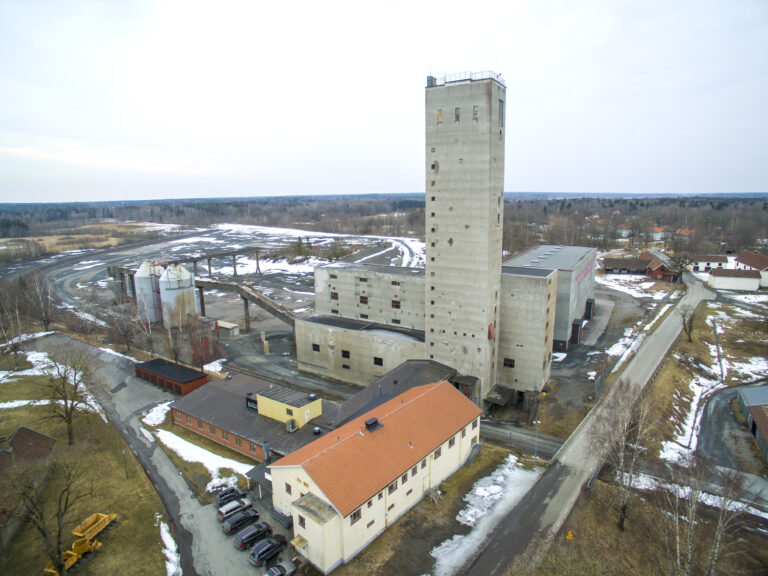THE HISTORY OF THE DANNEMORA MINE
Dannemora mines, in Dannemora in Uppland, has documented mining from the 15th century until 2015, then mainly as iron ore mines.
The town of Dannemora is located in Östhammar municipality, Uppsala County, about 45 kilometres northeast of Uppsala and 2 kilometres west of Österbybruk.
The mine has had several owners, including SSAB between 1978 and 1992. The mine was restarted in 2012 by the company Dannemora Mineral AB. On13 June 2012, the mine was officially reopened by King Carl XVI Gustaf. The company went bankrupt in 2015. The bankruptcy estate was bought in 2016 and is run by the Dannemora Group AB. The new owners plan to invest in mining, but also in other activities in the area.

In the photo: The Dannemora mine
An open pit from the 13th century
Today, there are preserved facilities, in the form of the open pit ”Storrymningen” of medieval origin, perhaps as old as the 13th century, as well as industrial and residential buildings from the 18th and 20th centuries, including the 72 m high mining headframe, which is one of Uppland’s architectural monuments. In 1481, the mining of iron ore at the Dannemora mines was documented for the first time: A document in which Sten Sture the Elder was involved.
In nearby Österbybruk, there is a rectangular 18th century plan of Walloon farm character and uniform residential buildings, Walloon blacksmith and other industrial buildings, as well as manor house from the 18th century with a park and farm buildings for agriculture, which are all are under conservation. An extensive dam system for power production for mines and mills is also found here. The mine has a depth of 620 metres. Sweden’s first steam engine was taken into operation at Dannemora mines in the 18th century. All mining methods have been used at Dannemora mines, from the fire-setting method, to gunpowder, and dynamite.

